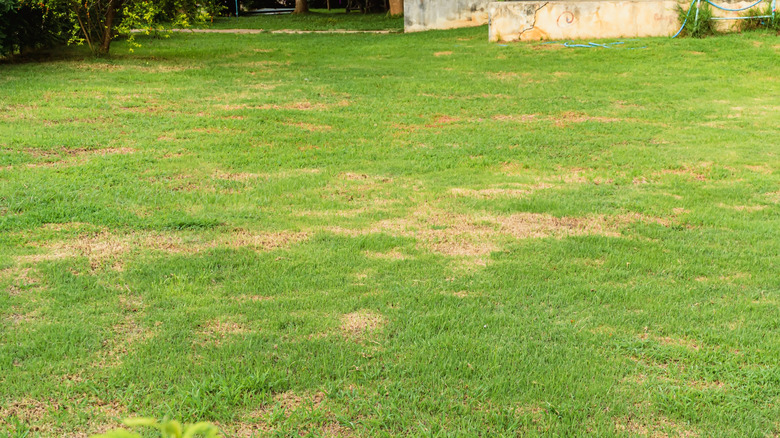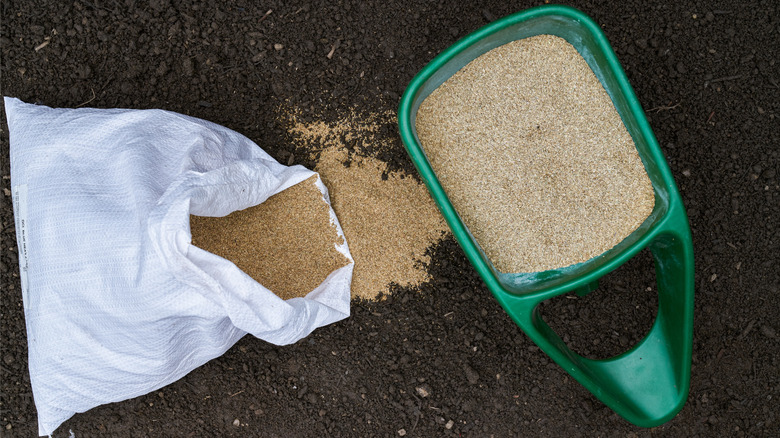Say Goodbye To Patchy Grass: Here's The Best Time Of Year To Reseed Your Lawn
At the end of summer, your lawn is as fried by the heat as you are. Looking brown, patchy, and all-around worse for the wear, you may be tempted to continue as-is with your lawn care since it'll be going dormant soon. Still, once late summer and early fall start to bring in crisp autumnal pleasantness, there's an opportunity to invest a bit of money and a few hours for an enviable lawn come spring. The best time to get new grass seed started is at least 45 days before your area's first frost. This gives the little rootlets a chance to get established so they can survive a chilly hibernation period. By the time next summer starts pushing the mercury higher and higher, your new seeds will be healthy, happy, and ready to show off.
You might need to reseed in a particular way, depending on your lawn's needs. Interseeding is filling in patchy areas with the same seed that's already growing. Overseeding involves planting seeds, often of different grass varieties, over your existing lawn without disturbing the soil. Look out for the signs that your turf could use the revitalization of fresh seeds, because your lawn might not need reseeding at all this year. Make sure it's not an unnecessary lawn project you don't actually have to do by seeing if your grass has dead areas, it isn't looking as vital as you'd like it, or it's ridden with weeds and other unwanted growing things. Reseeding once summer's wrapping up will give you the satisfaction that next year, your lawn will be lush and well-manicured.
New seeds, improved lawn
You're feeling glimmers of hope for the title of next year's "neighborhood's best" lawn, so you grab the keys to head to the home improvement store. Before excitement takes over fully, be aware of which kind of reseeding you should do. Save some money by making sure you're taking on the right task for your yard. Once you ID the right approach, this may become a yearly task — or more often if you have a struggling lawn. For grass that's in good shape, you might only need to take this on every two or three years. And if reseeding isn't necessary this year, spend the time poolside, instead, if you can!
Get ready to overseed if your lawn is sparse and anemic-looking. A thicker pelt eliminates vulnerable spaces where weeds and pests can settle in. However, older lawns might consist of less-vigorous grass varieties that could benefit from an energetic boost only new strains will provide. There are plenty of ideal grasses you should plant for a lush, green lawn, and scattering some of these seeds over your existing swath can result in a more resilient lawn. Make sure to do your homework to see what kinds of seeds are compatible with your existing grass.
A hot, dry season may leave your green space looking like a boxer who's lost a fight. The boxer just needs some patching up so they can fight another day, and similarly, some interseeding in those spots will ready your lawn for continued action. Take your lawn from patchy to perfect by interseeding trouble spots with seeds from the same species as your current grass.

